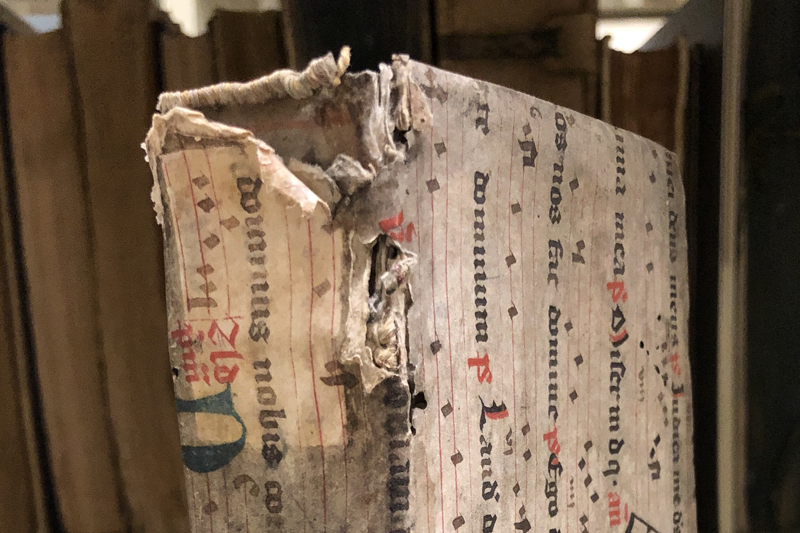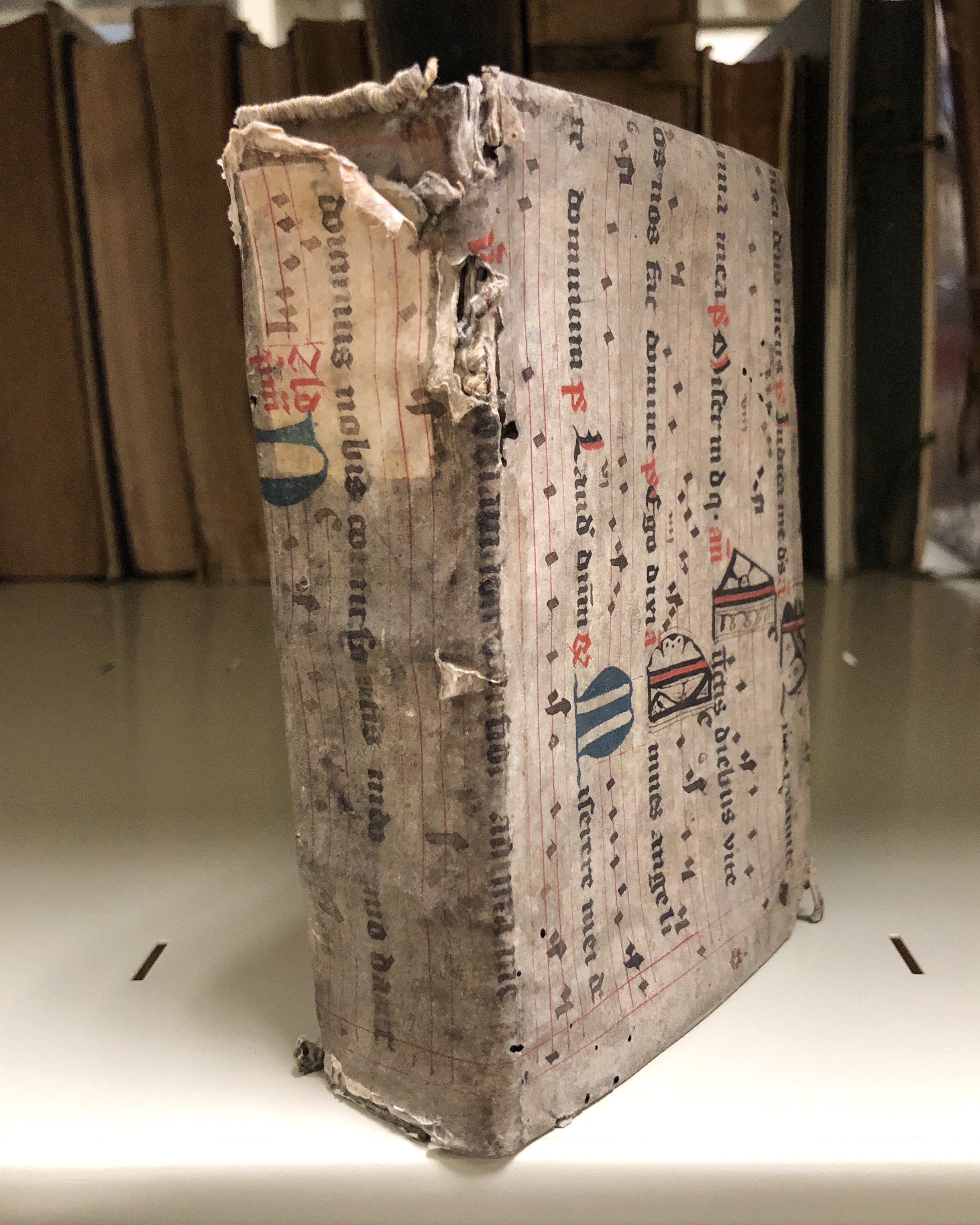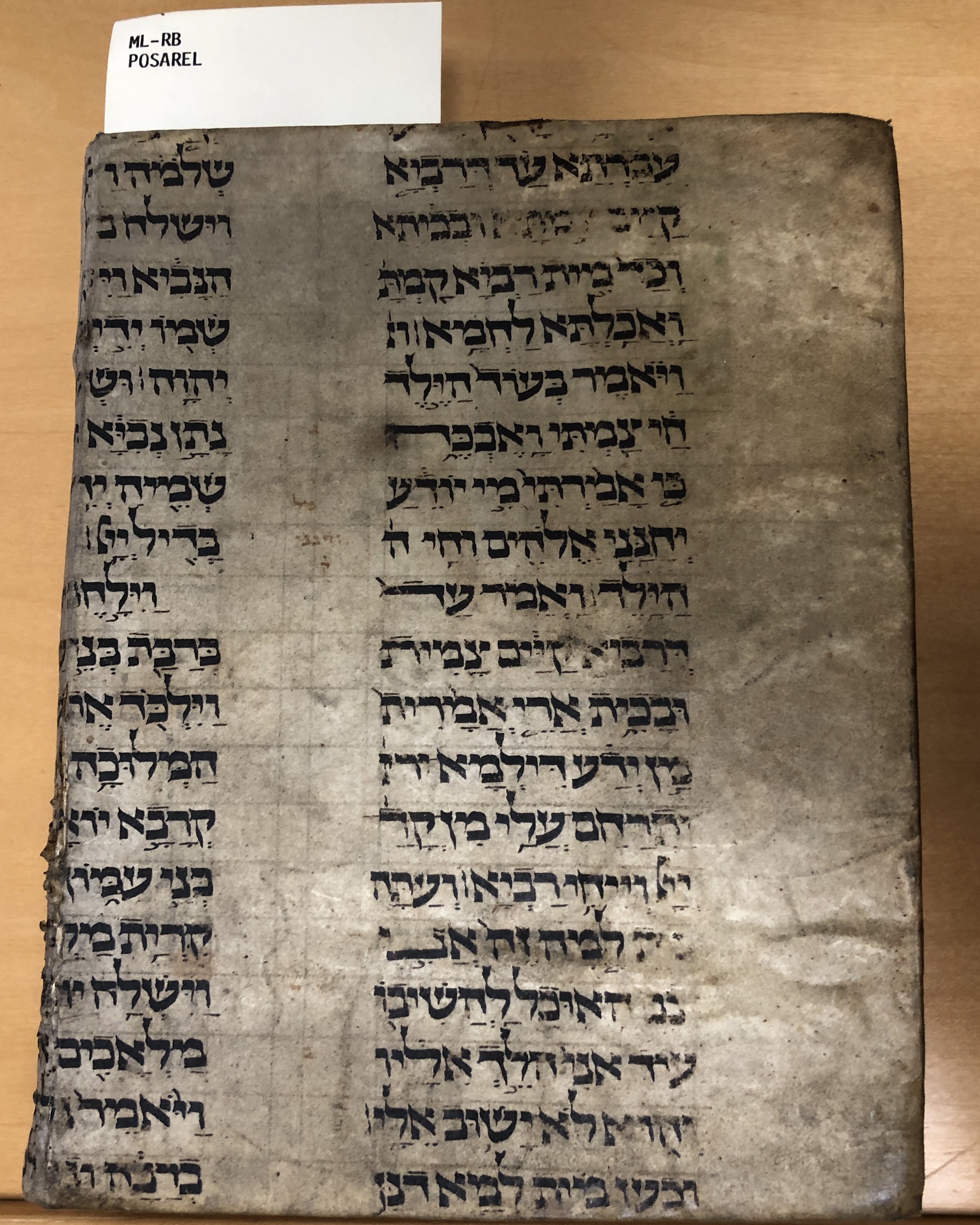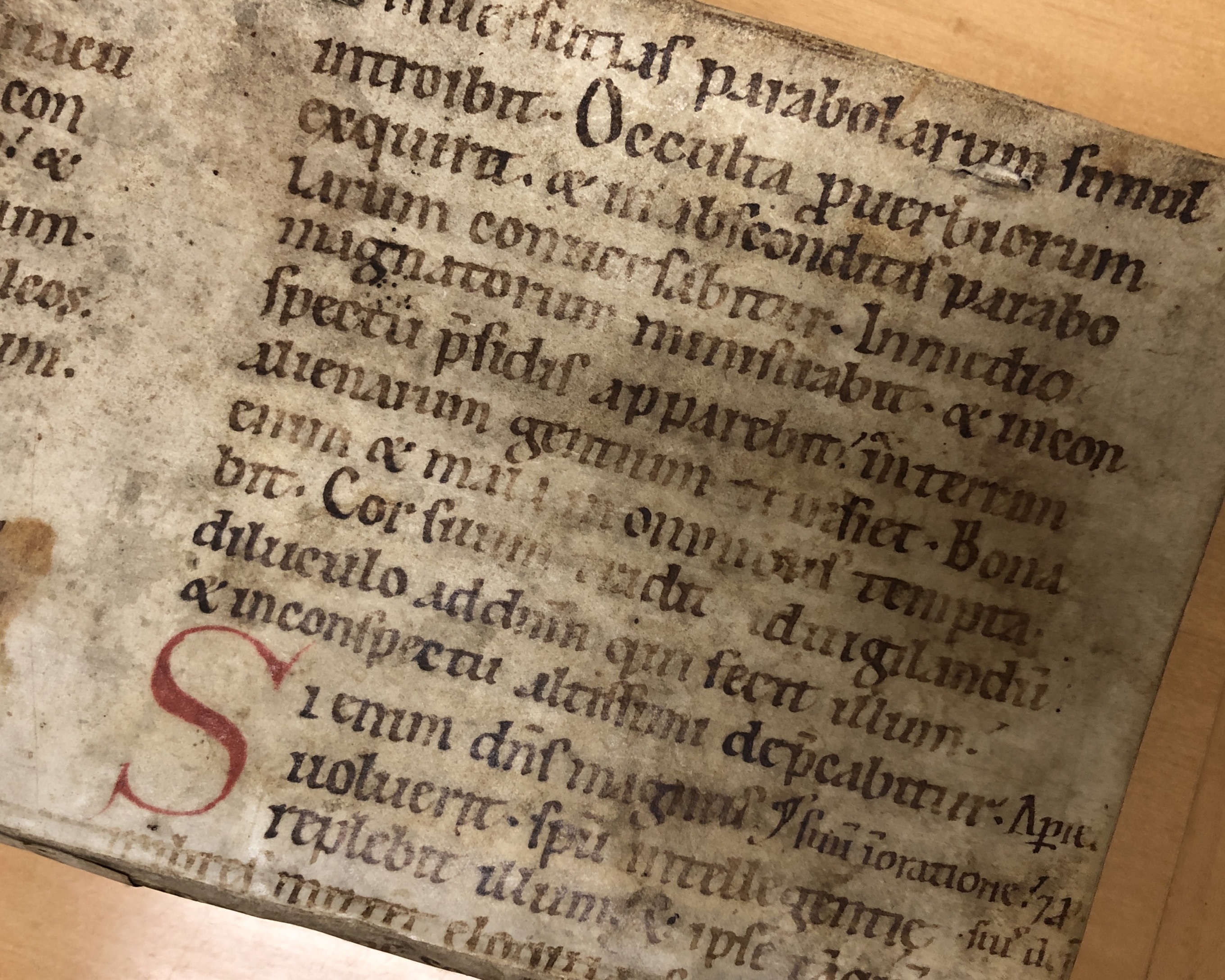Blogs

Recycling Book History: Manuscripts as Bindings
By Henry Handley
By now (we hope!) you’ve gotten a glimpse of the medieval manuscripts in the Marian Library’s Book of Hours exhibit, including a Book of Hours conserved this spring and the Hebrew manuscript leaf on the Marian Library’s oldest printed book. But there are always surprises to be found in the collections!
When yours truly set out to write this blog post, I was aware of only three books bound with visible manuscript components, includingthe Hebrew manuscript binding in the conservation blog post linked above. They represent a late medieval-early modern understanding of “reduce, reuse, recycle”: reduce the cost and effort of turning livestock into leather and vellum for books; reuse existing but outdated or illegible manuscript leaves that fit the boards of new books; and recycle other manuscript leaves into smaller pieces to line and support the boards, spine and “guts” of the book (or multiple books).
Three books with binding waste seemed like enough to get started, but when I was able to browse the shelves, another five examples appeared: one in Hebrew script, four in Latin in different hands. Only one has the full text identified so far: a leaf from a leaf from a Vulgate — a Bible in a fourth-century Latin translation — with text from Ecclesiastes 39. The rest are worn, indicative of their frequent use before and after binding. In some cases, manuscript waste is true to its name with faded text and soiled parchment; in others, crisp, clear ink and smooth vellum signal a history of careful handling or limited use over the centuries (or both).
Pre-1600 manuscript bindings can make up a hidden collection within a collection in many libraries of rare books, and as Lisa Fagin Davis noted in a presentation on manuscript fragmentology, surveying bindings is the first step toward discovering and making these fragments accessible. It will take more time and careful examination to learn about visible binding waste in the rare book collection. That’s but a fraction of the time, funding and non-invasive imaging technology that would be required to study the hidden manuscript waste in inner bindings — which could yield fascinating clues about culture, religion and intellectual life in the distant past. Reading between the faded lines, I see a clear message: we need a research grant.
The Marian Library staff and faculty have a lot on our agendas in a challenging time, but we still hope to advance research on these and other manuscripts in our collections in the future. As partners in the Peripheral Manuscripts Project, we already plan to digitize and describe manuscripts and fragments in the Marian Library and the University Archives and Special Collections. As we discover more manuscripts, we’ll start to make them discoverable for everyone in the catalog, too.
– Henry Handley is a collections librarian in the Marian Library




